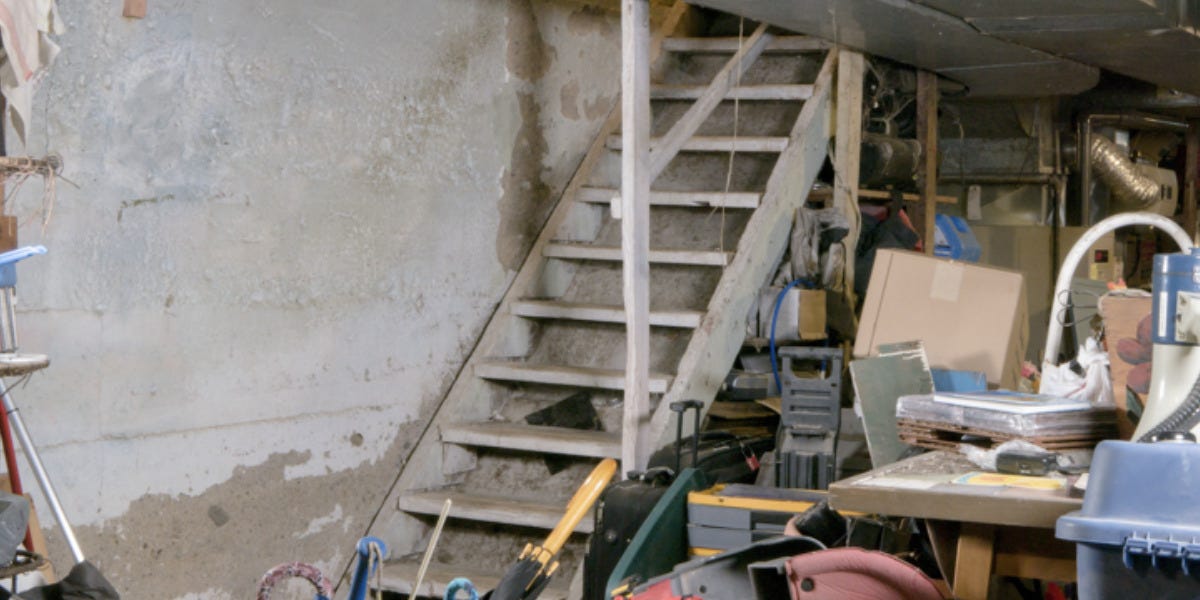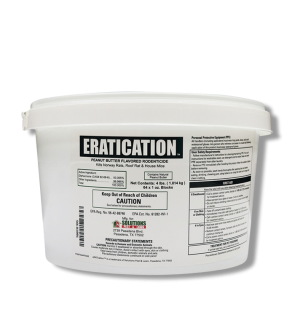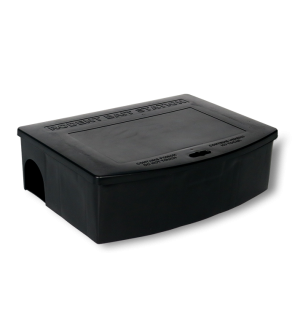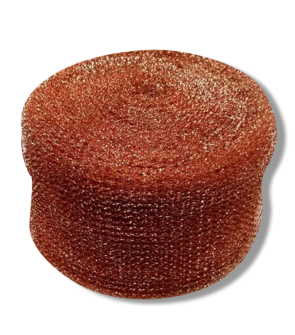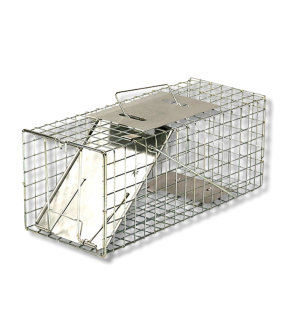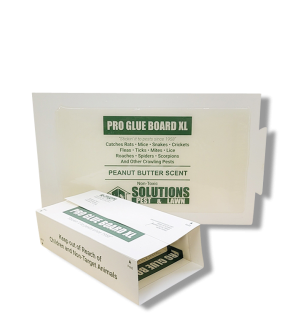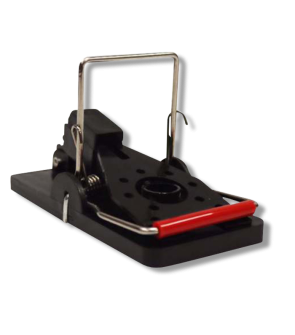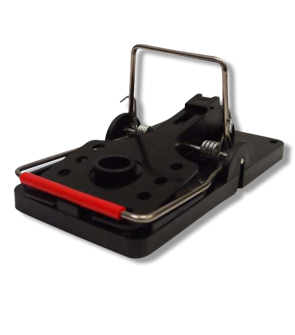Wildlife in Basement
Most Effective Products
Common Wildlife in Basement
Animals often make themselves at home in your basement, whether it's finished or not. There are several animals that might be active in your basement, but the most common ones are chipmunks, raccoons, skunks, snakes, and squirrels.
Wild animals cause a significant amount of damage when they enter your basement when they chew through walls, floors, and personal belongings.
Once they gain entry, they can also chew wires and their urine or droppings pose several health hazards. Not to mention the risk of their bite when startled or threatened.
Brushing off their noses or activities in hope of the animal leaving on its own can only increase these risks. Reclaiming your basement can be done by following the steps in this DIY guide and learning more about these animals.
While following these guidelines, local and state laws are still present and must be followed. It is recommended for the homeowner to visit their local animal control office or state website to visit proper rules and regulations associated with the control of wildlife.
If you are not seeing a pest listed here then contact our customer service team by phone, email, or in-person at one of our store locations for professional recommendations.
Chipmunks
While often cute and entertaining, chipmunks are destructive burrowing pests. They dig tunnels that are not wide, but in great numbers can weaken the structural integrity of your home's foundation. These tunnels also increase the risk of water gathering in inaccessible areas.
Identification

Chipmunks have reddish-brown fur, a white underbelly, dark colored stripes on face and body, and a bushy tail. They measure 3 to 8 inches.
Inspection

Chipmunks will make their nests in more elevated areas of your basement such as the ceiling joints or where the foundation meets the wall. They can also create tunnels under basement floors.
Treatment
Step 1: Seal Openings
 Chipmunks will travel the same areas over and over so you will need to determine where they are active.
Chipmunks will travel the same areas over and over so you will need to determine where they are active.
When confirmed, you will then fill these entry points to prevent chipmunks from traveling to and from your basement.
Seal cracks, crevices, and holes with caulk. Larger voids may need to be filled with copper mesh.
Replace weather-stripping around windows and doors to further deter chipmunks.
Step 2: Use Glue Traps
For inaccessible areas where traps cannot normally be placed, we recommend using a glue trap. A glue trap can be used for either a humane or lethal approach towards chipmunks.
For non-lethal, you must check these glue boards periodically and release the chipmunk through physical efforts. With some glue boards you can use vegetable oil to release them.
Solutions Pro Rat Glue Board XL is a large pre-baited glue trap that captures rodents, snakes, scorpions, and other pests indoors.
Its versatility is further seen with its ability to fold into a tunnel or be placed flat.
For a better catch rate, we recommend laying the glue board flat in areas inaccessible to children and pets.
This could be along storage boxes, walls, baseboards, corners of basement floor and ceiling, and near other entry points used by chipmunks.
Check the Solutions Pro Rat Glue Board XL daily to promptly release chipmunks or dispose of tampered boards.
To release a chipmunk, you will need to use vegetable oil to loosen it from the adhesive. Make sure to wear thick gloves to avoid biting and scratching.
Step 3: Live Humane Traps
To get rid of chipmunks in basements, a humane live animal trap can be used.
Solutions Humane Live Animal Trap is a box trap that holds various small to large sized animals without physical harm. To capture chipmunks, you will need to use the small size.
To use, release the trigger mechanism, open the door and set the trap. Once the trap has been set you will need to set bait inside. For chipmunks, we recommend using a combination of peanut butter, fruits, and cereal grains, or even flower bulbs.
Set the Solutions Humane Live Animal Trap along the pathways where you have seen chipmunks used for travel. Be sure to place these products on a flat surface.
Raccoon
Raccoons rarely fear homeowners, and will attack people if provoked or if you come too close to them. Unfortunately, these chances are increased when you come upon them unexpectedly in dark and tight-fitted basements.
They are also creatures of habit that repeatedly defecate in the same spot, called latrines, which other raccoons can use too.
Identification

Raccoons are mid-sized animals that have thick gray colored fur, ring-striped tails, black masks across their eyes, rounded ears, and somewhat long snouts. Generally these stout-bodies pests are 12 inches tall and 24 to 38 inches long.
Inspection
Raccoons are climbers so they can make their nests in more elevated spaces of your basement like the rafters.
They can also hide in clutter, boxes, and other storage containers kept in basements.
Treatment
Step 1: Use Live Animal Traps
Live humane animal cage traps are the best and safest way to capture raccoons inside of basements and outdoors around your home. We recommend using the large size of the Solutions Humane Live Animal Trap.
Be sure to place your trap on an even surface inside your basement. A raccoon might push or knock over the trap in order to reach the bait inside. Place a brick or weight on top of the trap to avoid this.
Set the trap along basement walls, corners of rooms, and near areas where you have seen their activity.
Once you are satisfied with where you have placed the trap, you can then bait it. When baiting your trap, place the bait at the far end of the trap behind the trigger plate so the raccoon is more likely to activate it.
To set it, push on the door lock and lift the door plate. Keep the door plate lifted while pulling the trigger arm forward to set it. You will know it is set when the trigger arm's hook catches the door.
Raccoons can bite so make sure you are fully protected before attempting to handle the cage.
Step 2: Seal Entry Points

Do not seal these openings right away, but make a note of where they are. Sealing entry points while an active raccoon infestation is going on can only trap these creatures in your basement.
When the animal has been captured, seal these openings with caulk and copper mesh. You may have to patch drywalls with excessive and larger holes.
Skunks
Skunks are known for their ability to spray a strong smelling liquid to ward off people, pets, and other animals they deem as a threat. For this reason, sighting a skunk in your basement is not ideal.
This odor can linger for weeks to even months so when they spray or die in enclosed spaces like basements it can become inhabitable.
Identification
Skunks are black to white colored animals that are often mistaken for cats due to their bushy tail, size, pointed snouts, and triangular heads. They have two thick white stripes down their back and tail and a white stripe down their snout.
Inspection

Treatment
Step 1: Eliminate Hiding Places
Skunks depend on hiding places to stay safe from you and breed. The natural darkness and clutter of basements are especially attractive to skunks since they are nocturnal.
Keep in mind that skunks have a spraying distance of 15 feet so make sure you are fully covered, including your eyes, ears, and face. You will have to dispose of your clothing afterwards if sprayed.
Get rid of cardboard boxes and replace them with sealable plastic containers since these pests cannot easily tunnel through them.
Also, Make sure all trash in basements is removed from paper, garbage cans, and other unnecessary objects. If you feed your animals in basements then dispose of unwanted pet food and water.
Step 2: Use Live Traps
Setting out several live humane animal traps like the Solutions Humane Live Animal Trap will help to control skunks in basements.
Position the Solutions Humane Live Animal Trap on an even, level ground surface near storage boxes, walls, corners of rooms, along pathways used by travel, and close to entry points used by skunks.
You may need to put a brick on top of the trap to avoid the skunk moving the trap.
To set the trap, first push down the trap door lock and lift the cage door. Keep the trap's door lifted while pulling the trigger arm forward to set it. You can tell the trap is set when the hook at the front is holding onto the front cage door and remaining open without you holding onto it.
Place food such as sardines or meat (food with strong odors) as bait at the back of the cage behind the trigger plate to encourage the skunk to step further into the trap. Once the skunk goes to the back of the trap it will step off the trigger plate and cause the front door of the cage to close.
Skunks can still spray you when trapped inside of cages so approach them with caution and have a protective barrier between you and the animal.
Snake
Snakes occasionally slither into basements due to the amount of shelter and to possibly hunt other pests they feed upon. The most common snakes to find in basements are garter snakes and rat snakes.
Although these snakes are not venomous, there are other possible snakes in your basement that could be. Most snakes you encounter will bite if you walk too close to them or if they feel threatened.
Identification
For a visual reference look at the image above: On the left is the garter snake and on the right is the rat snake.
All snakes will have a long, legless body that is thin and covered with scales. They also have a forked tongue used to smell, taste, and sense other people or animals with.
Depending on the species they will come a wide assortment of colors like pink, green, red, black, yellow, white, blue, orange, or brown with either several markings or none at all.
Garter and rat snakes share many of the common characteristics above with a few defining features.
Garter snakes have 3 longitudinal striped colored either white, yellow, blue, green, or brown. The belly is a pale-green to yellowish color. Body color is either black, brown, gray, or olive. They also have a long, triangular shaped head.
Depending on the species, rat snakes come either in a solid or variation of black, yellow, olive-green, brown, or gray color with a light colored belly, throat and chin. Their heads are more of a boxed wedge-like shape.
Inspection
Snakes are fond of areas in the basement that provide heat, moisture, darkness, and seclusion.
Which could be in boxes, storage containers, furniture, unused cabinetry, piles of fabric or clothing, toys, firewood, and around sites that rodents often visit.
They can also hide in cracks, crevices, and voids in baseboards and walls.
Treatment
Step 1: Eliminate Food Sources

We recommend using both the Solutions Easy Set Mouse Trap and the Solutions Easy Set Rat Trap. Both of these traps are durable plastic snap traps that capture either rats or mice with its unique 90 degree catch bar.
Set up several of these products throughout your basement where you noticed rodent activity. Place one of these traps every 15 to 20 feet from each other.
Use peanut butter on the snap traps to encourage rodents to feed. It is also not easily removed from snap traps by rodents.
Step 2: Use Rodenticide Outside

Use Eratication Rodent Bait inside tamper-resistant Solutions Rat and Mouse Bait Stations. Eratication is a powerful multi-feed rodenticide bait used to control rats and mice. It also is peanut-butter scented to attract rodents to the bait.
Place 2 to 3 Eratication bait blocks into your station. Place your rodent bait stations along perimeter walls or fence rows. You will want to place each station about 15 to 20 feet apart to ensure thorough coverage of your area.
Check on the bait stations every few days to check for activity and be sure the bait remains in place with a constant supply of bait for at least 15 days to ensure all pests in the area have had a chance to eat the bait.
Step 3: Declutter
Modify the arrangement of your basement by removing as many hiding places for snakes as possible.
Move furniture and other objects away from the walls and try to avoid keeping everything in large piles.
Instead, elevate these objects at least 12 inches off the floor on a stand. The same will be to be done with firewood kept in basements. Best thing to do is to move them outside if possible.
If you have any cardboard boxes, reduce a snake's chance of resting in these sites by replacing these with a plastic storage container with tight-fitted lids.
Step 4: Use Glue Boards
Set up glue boards like the Solutions Pro Rat Glue Board XL inside of your basement to trap snakes.
Place several of these glue boards under furniture, appliances, shelves, and along walls, baseboards, storage containers, and other objects.
You can also place these in the pathways used by rodents since snakes will follow their scent.
Check on the Solutions Pro Rat Glue Board XL daily to see if you have caught a snake.
If you have, then contact your local animal control office or pick the snake and glue board up with a long shovel to dispose of them.
Squirrel
Squirrels are smart creatures that can fit through small openings throughout your basement. Leading to damages to electrical wiring, insulation, and surfaces of walls.
This can lead to more costly damages and serious threats such as fires, staining from defecation activities, and potential water damages.
Identification

Inspection
Squirrels like to stay in elevated spaces in your basement such as the rafters, storage bins on shelves, and other void spaces in the wall.
Treatment
Step 1: Remove Food Sources
Remove available food sources in your basement. This will help to increase your success with traps and avoid these pests moving into your home from the basement.
Keep your trash sealed in trash cans with lids and move them outside when full in containers with lockable lids. Other food sources such as pet food should be removed when not finished.
Store all other food items in a sealable plastic container with a tight-fitted lid.
Step 2: Bait and Set the Trap
Remember where you have seen squirrel activity and possible entry points then set the Solutions Humane Live Animal Trap near them. These type of traps will help to safely capture the squirrel and remove it from your basement.
To trap squirrels in basements with this trap, you will need to use the small size.
Using the proper bait will increase your chances of catching a squirrel. These animals prefer nuts and fruits, but it is best to bait with peanut butter so the squirrel cannot steal the bait and escape the trap.
The bait should be placed near the back of the trap to ensure they step on the trigger plate in order to reach the food.
Key Takeaways
What Are Common Wildlife that Enter Basements
- Common wildlife that enter basements are squirrels, skunks, raccoons, chipmunks, and snakes.
What Animal Lives in Basement Ceilings
- Squirrels and chipmunks will live in the ceiling of basements.
How Can You Tell Which Animal is Living in Basement Ceiling
- Look for signs of their activity from damages to waste. You can also listen for sounds during the day or night.
